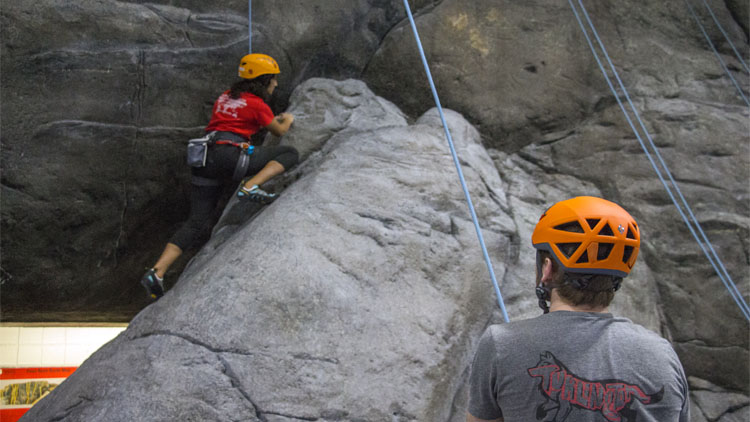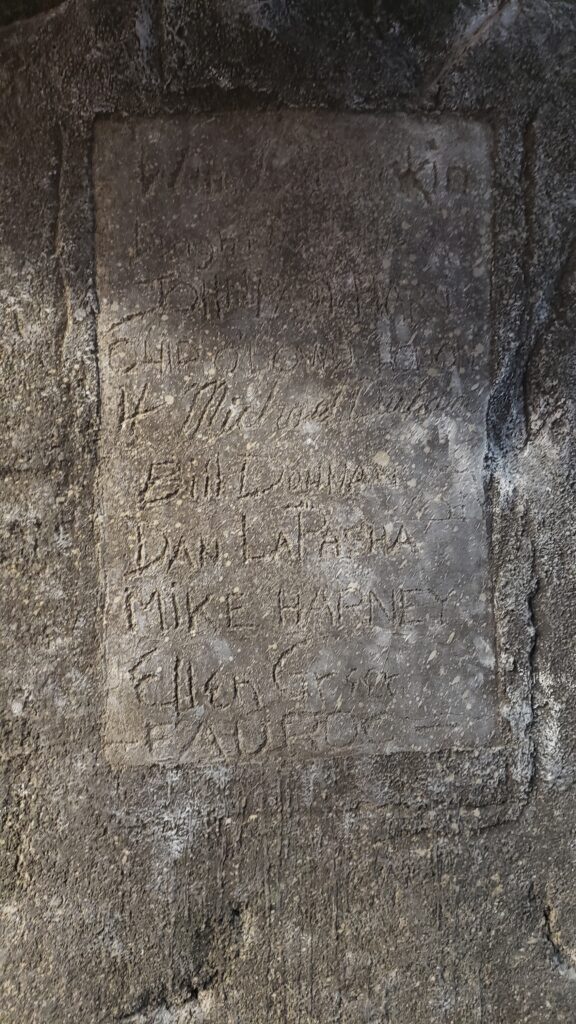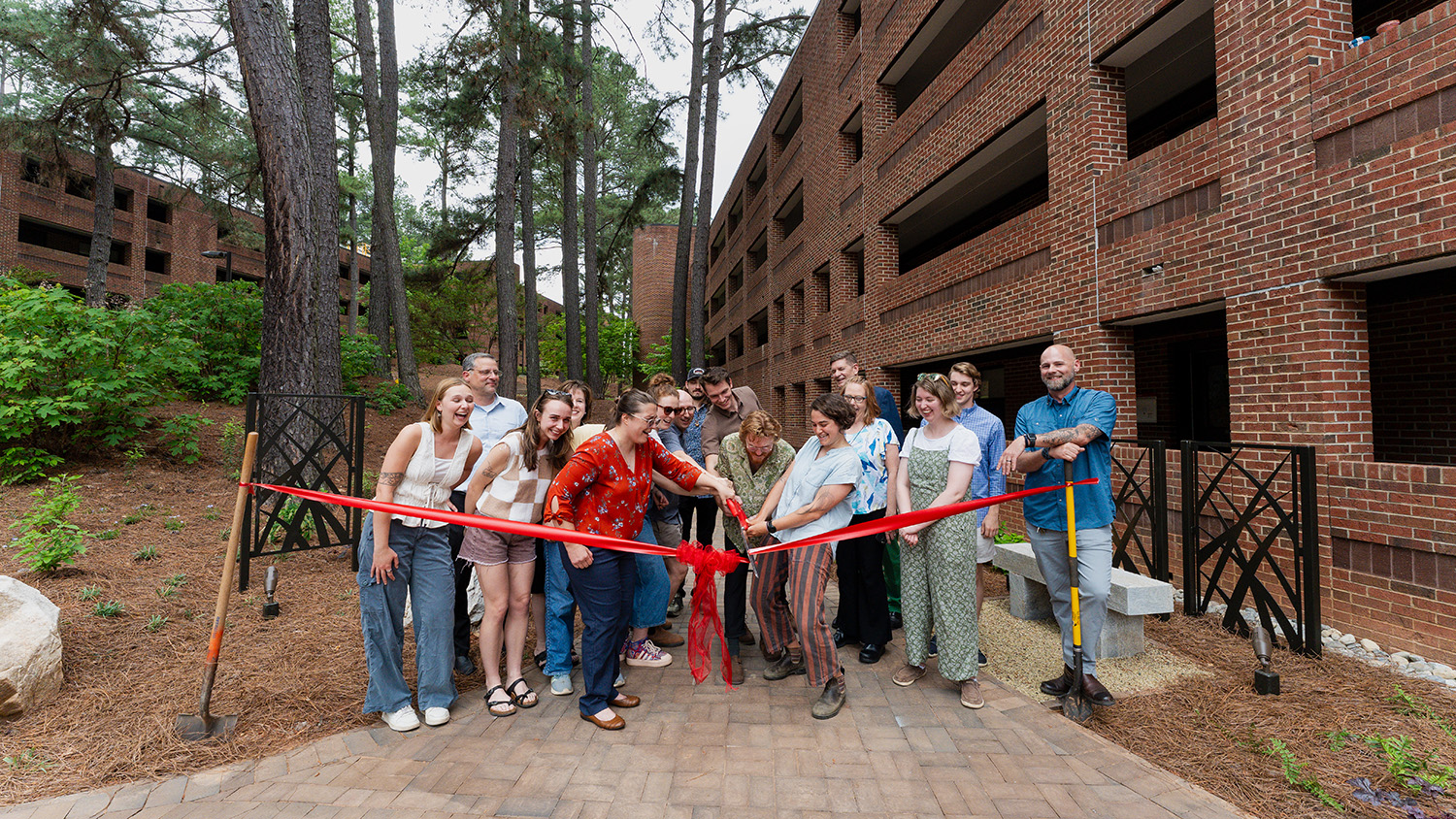Going Beyond the Wall

Earlier this year, Christina Koch, a NASA astronaut and NC State alumna, reminisced about her time at NC State and how the Carmichael Gymnasium climbing wall helped her to pursue her dream of becoming an astronaut.
To quote Koch, “My time at NC State was one of constant discovery” and the hobby of climbing “lent itself to some of the challenges that I faced in learning to become an astronaut. It taught me to go out and achieve the things you think are achievable, to believe in yourself, and learn the important aspects of teamwork.”
This past spring semester, Qulea Anderson, an alumna who recently completed her double major in English and women and gender studies as well as a minor in Africana Studies, had the chance for a personal tour of the wall and reflected on some of the interesting histories and facts she learned about the wall.
In Her Own Words…
I, a graduating senior at NC State, had never seen the climbing wall in person, but once I laid eyes on it, Koch’s words made sense. Seeing the wall up close, seeing the height, and trying to understand how anyone could climb it, it makes you understand that if you can climb it, then you really can do anything. You take that skill and apply it to the daily challenges within your life, which is exactly what Christina Koch did.
Before NC State created “Faux Rock,” an affectionate name for the climbing wall, when students wanted to take rock climbing classes they would have to practice on the bleachers at Riddick Stadium. The students would have a rope tied around their waists as they climbed up and down the bleachers to learn the basics of climbing.
NC State’s rock wall is what is technically considered to be a textured concrete wall. There is only a handful of this type of wall in use, and Faux Rock has been a part of Wolfpack campus since the 1980s. The wall was built by first laying out the frame and then spraying concrete onto it. That was followed up with some sculpting to provide details like cracks and features that resemble an actual cliff. If you look closely enough, you can even find some hidden treasures left behind from some of the wall’s earliest enthusiasts.

The climbing wall is currently in the back area of Carmichael Gym, which users admit can feel a little out of the way. That makes the wall undiscoverable by some Wolfpack students, like myself. However, as anyone who has visited the central campus this year knows, Carmichael Gym is currently undergoing some major renovations. The plans include a new climbing wall near the entrance of the Wellness and Recreation Center, so anyone visiting the center can see and experience the wonder and thrill of climbing.
The rock wall currently inside of Carmichael Gymnasium is considered static; however, the one that will be built in the renovated Wellness and Recreation Center will be modular, meaning that it’ll have the plastic colorful handles for climbers to grab and step on as they traverse the wall.
Terry Dash, a senior lecturer in health & exercise studies, discussed some of the tools and techniques students interested in rock climbing may need to become familiar with before taking on the challenge of the climbing wall. One of those is baby belaying, or when a new climber is first learning to belay properly. Explaining what exactly belaying is, Dash said it is a technique used in climbing, noting “it’s what holds you in place and [the rope] stretches about three percent”. Essentially, it’s a technique that is important for safe climbing. It keeps you from completely hitting the ground, even if the belayer, the person holding onto your rope, isn’t paying attention, it allows the climber a little slack to fall safely without hitting the ground.
When the wall was first built, the climbing team did not have the proper climbing harnesses that are used today. Modern harnesses allow for users to sit comfortably, suspended in the air, which provides them the ability to try to figure out the problem or challenges that may arise while climbing. In the wall’s early days, climbers would often have to create their own harness out of a bit of rope tied around their waist multiple times and attach it to another rope by tying a knot. Times have definitely changed, and classes like HESO 258: Basic Rock Climbing, help to teach students the proper technique and how to use modern tools and equipment to safely enjoy climbing.
The rock wall itself provides climbers with challenges as well, as there are several paths someone could take to reach the top. It has over 20 paths to the top, and even Dash admits that there are a couple that give him a little trouble during his climbs.
If you’re interested in taking on some of the challenges of the climbing way, you may want to consider the rock climbing courses offered through the Department of Health and Exercise Studies. Typically the department offers eight to 13 class sections a semester at a range of levels. For those looking to take their climbing skills outside of the classroom, Wellness and Recreation also host a number of climbing workshops, clinics, and trips throughout the year for students and gym members.
- Categories:


